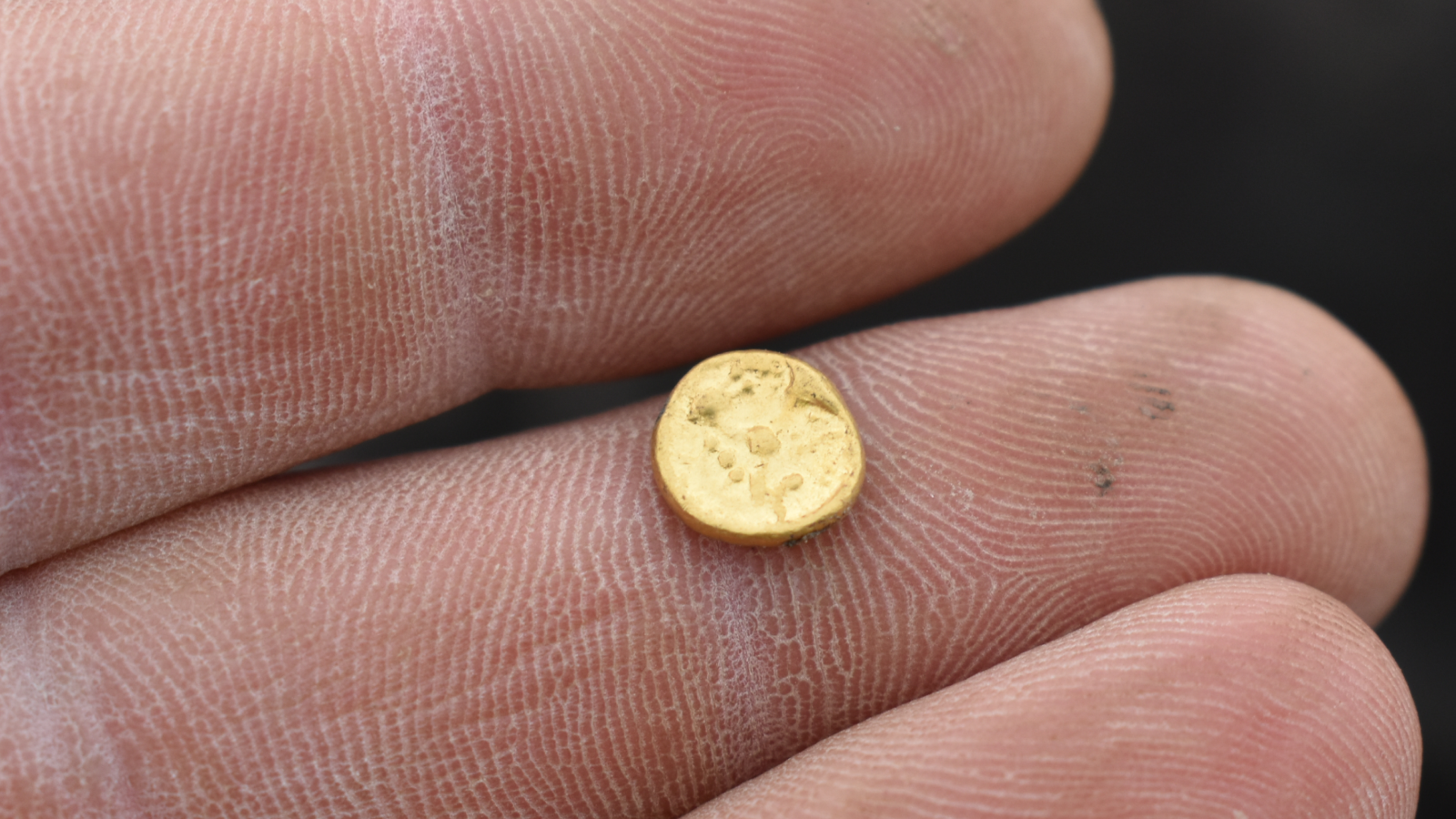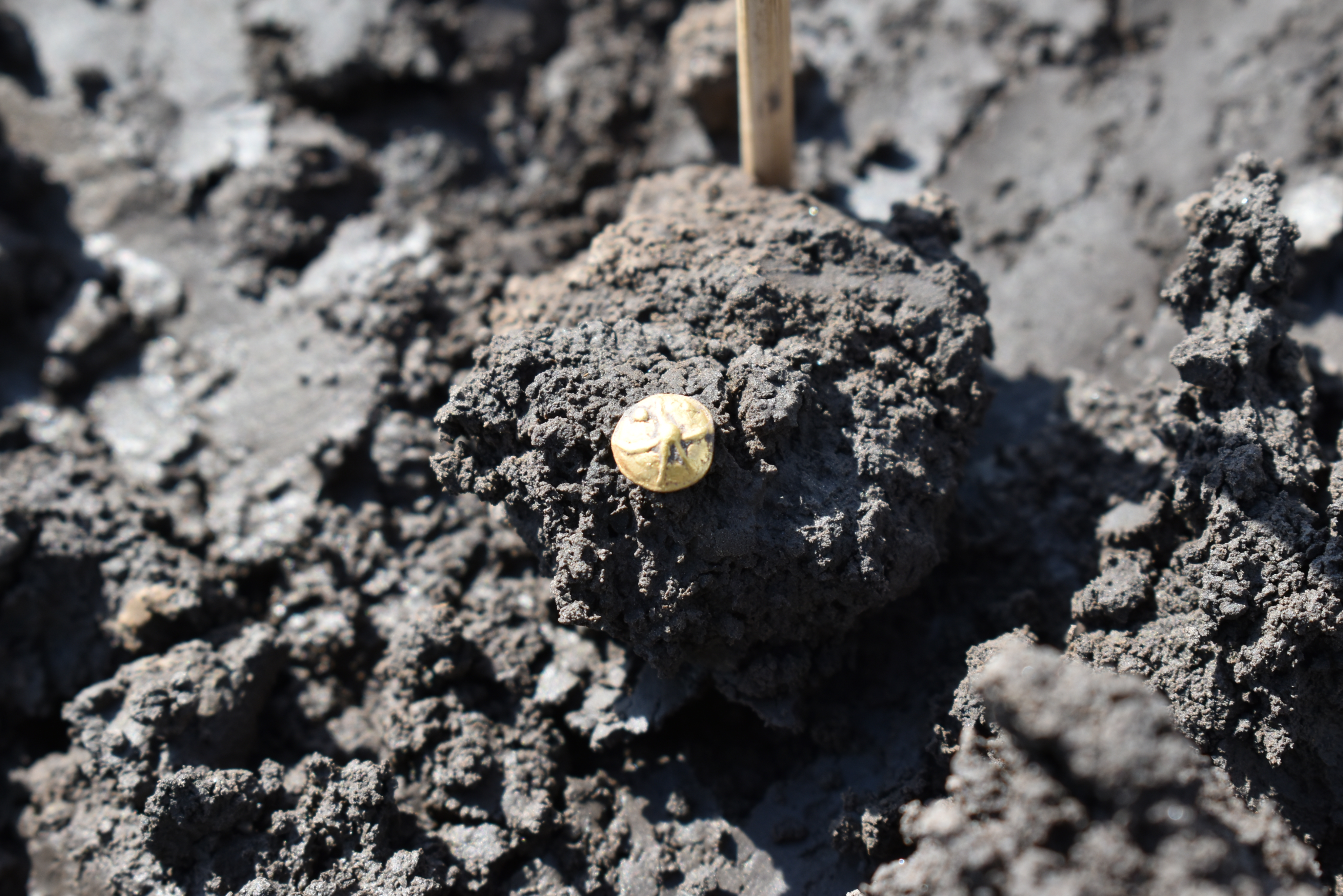A 2,200-year-old Celtic settlement containing several hundred coins and over 1,000 pieces of jewelry has been discovered in the Bohemia region of the Czech Republic.
The site, “unparalleled in its scale and character in Bohemia,” held a vast number of ancient riches, including amber and fine pottery, Museum of Eastern Bohemia representatives said in a translated statement. The site was not fortified, suggesting that the people who lived were major players in regional trade.
The settlement was discovered by archaeologists who were surveying the area before a motorway was built. In addition to the valuable artifacts, they found the remains of buildings, including dwellings, production facilities and at least one religious sanctuary, according to the statement.
The settlement, near the city of Hradec Králové in the north-central Czech Republic, was large — about 62 acres (25 hectares), or about the size of nearly 47 American football fields, said Tomáš Mangel, a professor of archaeology at the University of Hradec Králové who is co-leading the excavation.
Some of the coins are silver, and some are gold, the statement said. While it’s not yet clear exactly how many coins have been found, there appear to be several hundred, Mangel told Live Science in an email. The jewelry includes “pieces of bronze and iron brooches, fragments of armlets, metallic components of belts, glass beads and armlets,” Mangel said.
The site dates to the La Tène culture, an Iron Age culture that flourished in parts of Europe from roughly 450 to 40 B.C. The culture is generally associated with the Celts and has similarities in the crafting of its art and artifacts, many of which have anthropomorphic designs.
The newly found settlement helps us better understand how settlements were organized between the third century and the first century B.C., Mangel said.
Related: Were the Celts matriarchal? Ancient DNA reveals men married into local, powerful female lineages
Who lived here?
Historically, the Celts were different groups that lived across continental Europe, including the Gauls in France and the Celtiberians in Iberia. Traditionally, the Celtic people who lived in Bohemia were believed to be from a tribe called the Boii. However, Mangel said we cannot be sure that the Boii actually lived at the newfound site. There were other Celtic groups that lived in the region and no inscriptions have been found at the site that tell us who exactly was living there.
“Bohemia is traditionally really connected with [the] Boii,” Mangel said. “But the research [done recently] shows that we can only say that [the] Boii were settled somewhere in Central Europe.”
While some researchers used to think the name “Bohemia” came from the word “Boii,” he said, the two words may not be directly related. The name Boii was connected to Boiohaemum, which was an ancient name for the region, Mangel said. The name Boiohaemum was in turn connected to Bohemia, which today is part of the Czech Republic.
The “connection Boii – Boiohaemum – Bohemia – Czech Republic is rather cliché based on misinterpretations of historical sources in the 19th and earlier 20th [century],” Mangel said. “It is simply not correct.”
“Amber route corridor”
The discovery of the rich artifacts, including the amber and fine pottery, suggests that the people who lived there likely traded amber and other products on routes across Europe, the statement said, noting that luxurious ceramics may have been made at the settlement.
Maciej Karwowski, an archaeologist at the University of Vienna who was not involved with the excavation, told Live Science in an email that “the newly discovered site is particularly interesting.”
It is similar to other settlements found on the “amber route corridor,” Karwowski said. This trade system transported amber from the Baltic and North seas to Central Europe during this time period.
A museum exhibit featuring some of the artifacts from the settlement will debut during the winter holidays, the statement said.
Celtic quiz: Test your knowledge about these fierce tribes once described by Julius Caesar

